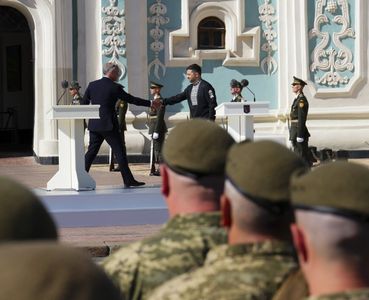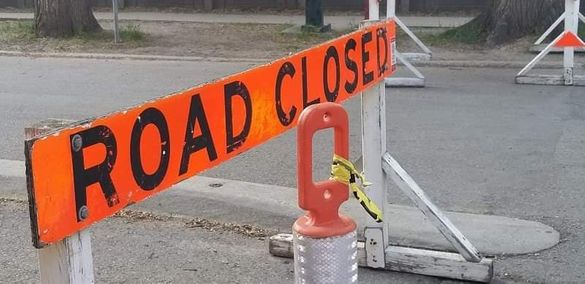Local Sports
Hockey Manitoba testing 'Green Armband Initiative' in Pembina Valley - Part 1
Heading into the 2025-26 minor hockey season, Hockey Manitoba has announced they will be launching the 'Green Armband Initiative', a program designed for younger officials, starting in the Pembina Valley with plans for it to expand province wide in the future. What it's all about Dustin Stewart, Manager, Operations for Hockey Manitoba, details what the initiative is all about. "The 'Green Armband Initiative' is something that had started a number of years ago, and has been operating in a few different provinces across the country. The goal of the green armband, is to basically provide a form of identification for officials that are 17-years-old, or younger, that are working within the province. This is to identify the fact that these officials are younger than 18, they are still learning as officials, and just really trying to clarify, bringing it to the forefront for those around the game, whether it be parents or coaches, that sometimes, that official who's on the ice calling your game, is going to be a younger person, who much like the athletes on the ice, is developing, and is still learning. As a result, there may be some calls you don't agree some, some things that go a little bit differently than you might like, but just like the athletes who are provided the opportunity to sometimes make mistakes but ultimately develop, we're giving that same opportunity to the officials." Strong track record of success As the pilot project sets to launch in the Pembina Valley, Stewart says there is an understanding that this has worked elsewhere, and can work in Manitoba. "Over the years, there have been multiple different initiatives that have taken place that are always kind of looking at the same thing, and it's ultimately how do we provide the best development path for our officials. The green armband is something that we've seen in Saskatchewan, we've seen it in Nova Scotia, and areas that are more similar to Manitoba in scope, they've had success with running this initiative, and allowing that to help curbing some of the incidents that occur, with, unfortunately, abuse of an officials, or officials having some negative experiences while participating int he games. We've seen success in the other provinces, and this just really gave us the opportunity to take something that can just continue to enhance the safety and development for young officials." Entering Manitoba through the Pembina Valley Hockey Manitoba will be starting to put the footprint of the 'Green Armband Initiative' down in the Pembina Valley, and Stewart explains why they decided to start there. "I think whenever you're looking to identify an area where you're going to pilot something, there's always a challenge to determine what is the optimal environment to be able to see the strengths, but also the weaknesses for any given program. Pembina Valley, being one of our larger regions, not our largest, but one of our larger regions, with a solid playing base, and solid base of officials, that really stuck out to us as a place that could work really well. Beyond that, it's also a testament to the fact that there are a number of people within the Pembina Valley region that are involved in the officiating side of the game, and they're very bought into this. They're keen to see it role out in the Pembina Valley, and they're going to work with us on ensuring that we can really see what this can provide. That's what you're looking for out of piloting a project, you're wanting that optimal place to see things work, see the strengths, see where some of the weaknesses are, and be able to then take it to a larger role out across the province." How to gauge success of the program On the surface, it can be tricky to know if the 'Green Armband Initiative' is being successful, but Stewart says, thanks to it already going elsewhere, they can see when things are working, and what it means to the long term plan when it comes to officials in Manitoba. "For us, just moving into the launch of this, we don't have any of our own data to back up, yet. But, we know that in other provinces, they have seen, and I don't think it's so much growth, but they have seen noticeable increase in retention of officials. That's a key area. We've been lucky in Manitoba over the last couple of years, we've seen record numbers of officials registering each season, that's a testament to the fact that there is an interest from our young people to get involved in officiating in hockey. The concern is, once you get them involved, how do you keep them involved? Unfortunately, some of the negative experiences that some officials can have, really can cause problems when it comes to keeping those kids involved in the game as officials. We're really quite hopeful that with this initiative, we can hopefully improve the overall experience for young officials who are learning how to be on the ice, and how to do what they need to do as a referee, or as a linesperson. We're really hopeful it improves the overall experience, and keeps those kids involved in the game. If that improves the number of officials that are signing up, we believe the more the merrier when it comes to officials, because they are a vital part of the game, without an official, we don't have a game. We believe we're going to see the positive impacts and benefits of this." A key part of all of this, is education With the implementation of the program, Hockey Manitoba will be working toward educating coaches, parents, and those around the game, something Stewart says is the key to the whole thing. "The education component is equally as, if not even more important to the actual green armband itself. Making sure coaches, making sure parents, all the key stakeholders understand the rational behind this initiative. With coaches, it's something we will be looking at adding to some of the supplementary information that is provided through the coaching certification process. But, beyond just the coaches that are certifying as new coaches this year, we need to make sure the information is getting out to existing coaches, and people who may have been in the game for a number of years. We're working now on trying to enhance some of the material that we'll be able to send out, and some of the information that we'll be able to use, promoting the importance of this initiative to all people involved int he game. Without the education process, it's just a green armband on somebody's arm, but when you add the education to the actual green armband, that's when you really get the initiative that can make a difference." Extra information for officials For ones that will be wearing the armbands in the Pembina Valley, Stewart says there will be more details provided, and a little more information on the level of tolerance. "There's going to be more of a focus across the Pembina Valley for our official clinics, on information, especially at the level one and level two, the two areas where the new, younger officials are coming in, as to why they're wearing the green armband. A part of that will also come from the regional rep coordinators, from the assigners, the people that are involved in some of the administration on the officiating side, in each minor hockey association in Pembina Valley, ensuring that those officials understand what the goal is of the green armband. That will also take into account the information as to, what some of the potential ramifications for people that still choose to create those negative situations for officials, whether that's coaches or spectators. In circumstances where abuse of officials occur, there will be increased penalty for that." Coming up in part 2 In part two of the conversation with Dustin Stewart, Manager, Operations for Hockey Manitoba, more on how the 'Green Armband Initiative' plans to go throughout Manitoba, and more.








